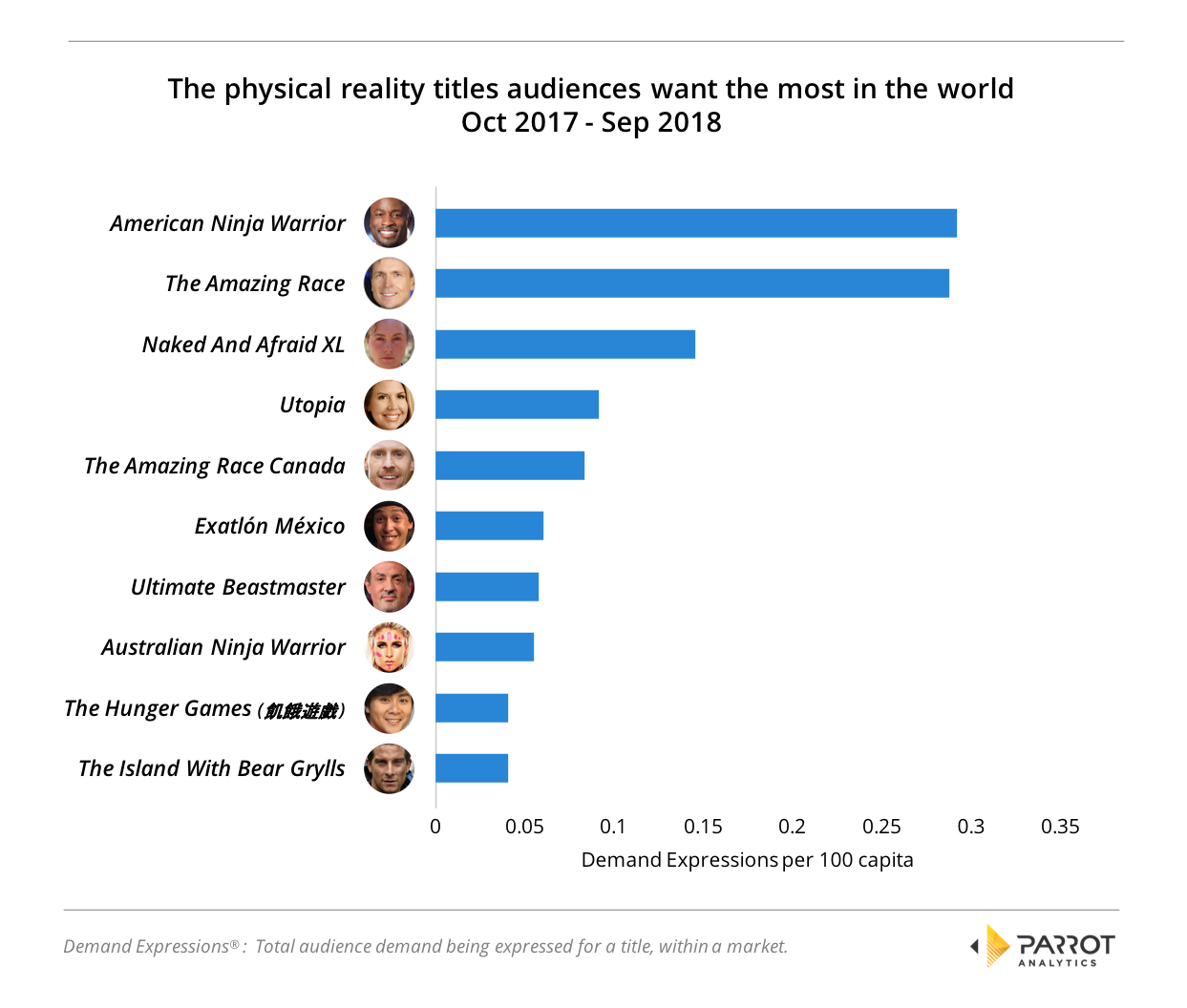Image: American Ninja Warrior (NBC)
Few genres are as trend-led as reality titles: Recall the boom in housemates-type shows after Big Brother really took off, or the increase in celebrity lifestyle titles after Keeping Up With The Kardashians became a hit.
Arguably, reality is one of the few genres that reliably still produces “destination television”; therefore knowing what reality formats are going to capture the headlines, keep fans engaged and drive audience demand in the next year is crucial.
To analyze the past performance and determine the shape of future trends for the reality genre, Parrot Analytics has leveraged global demand data. The first question we will seek to answer: Which genre is currently King of the Reality Jungle?
Talent Competition is 2018’s top reality subgenre in the United States
While smash hit reality formats can originate in any country, global popularity tends to take off after US adaptations. The following chart shows how the total demand for some key reality subgenres compares to each other in the US over the last six months.
With numbers like these, it’s unlikely anything is going to dethrone the talent competition subgenre any time soon: Talent competition is likely going to be the top reality subgenre of 2019 as well.
But are there any other subgenres on the rise?
Demand for physical reality titles is increasing globally, even faster in the United States
One possible future contender to talent competition reality shows is the physical reality subgenre. These shows (also called physical competition shows) pit contestants against each other in trials of physical strength and agility. While such titles have of course been around for decades – 1989’s American Gladiator is probably the first well-known example – the sustained success of American Ninja Warrior has inspired a new crop of contenders, much like The Bachelor did for romantic reality titles.
To show that the demand for physical reality titles is on the rise, the daily total demand for the physical reality subgenre was determined worldwide. Taking into account hundreds of millions of Demand Expressions daily, we can shows precisely how the global demand for this subgenre has changed over the past 12 months:
We next repeat the analysis but focus on the demand trends for physical reality shows in the USA. This is because the US market is not only one of the largest media markets, but as mentioned earlier one of the most influential.
Which physical reality shows worldwide are currently paving the way?
Finally, we identify which current shows in the physical reality subgenre are finding the most favor with global audiences; the chart below reveals the ten physical reality titles with the highest average global demand in the past 12 months:
While talent competition shows are highly likely to retain their spot as the highest demand reality subgenre, physical reality is certainly looking like a subgenre to keep a close eye on in 2019.
The data in this article are based on Demand Expressions (DEX). DEX is the globally standardized TV measurement metric developed by Parrot Analytics, which represents the total audience demand being expressed for a title, within a market. Audience demand reflects the desire, engagement and viewership, weighted by importance; so a stream/download is a higher expression of demand than a ‘like’/comment.

